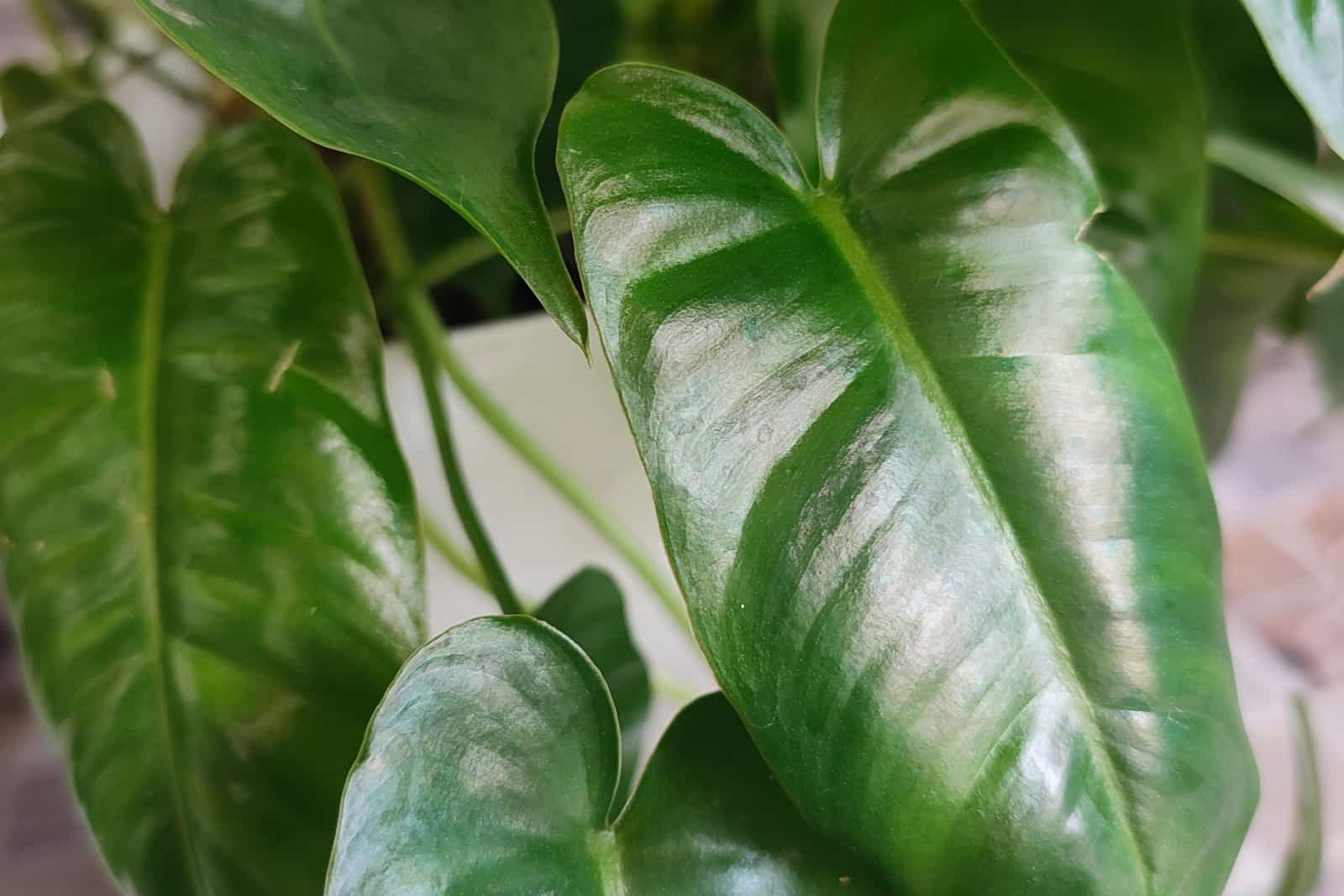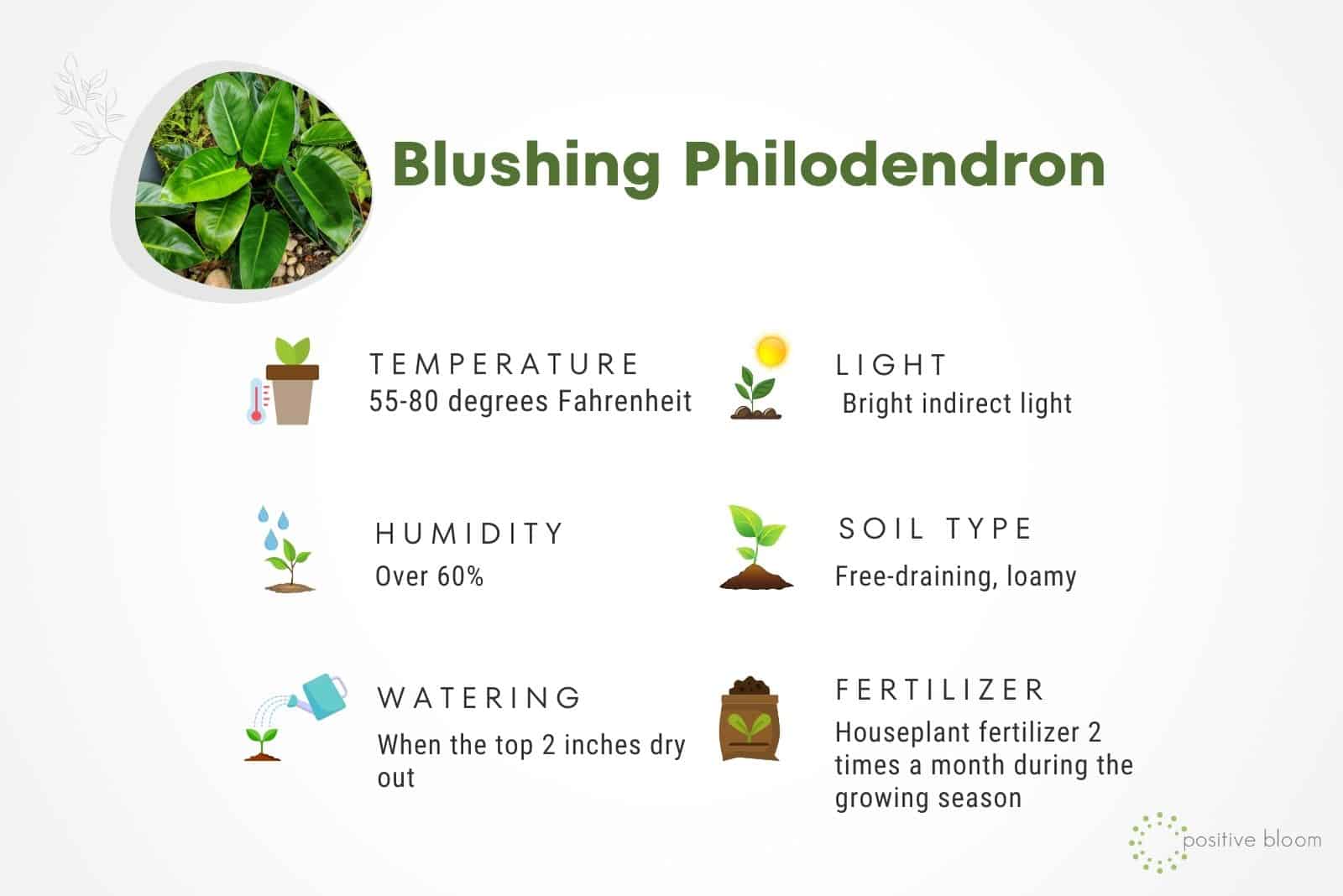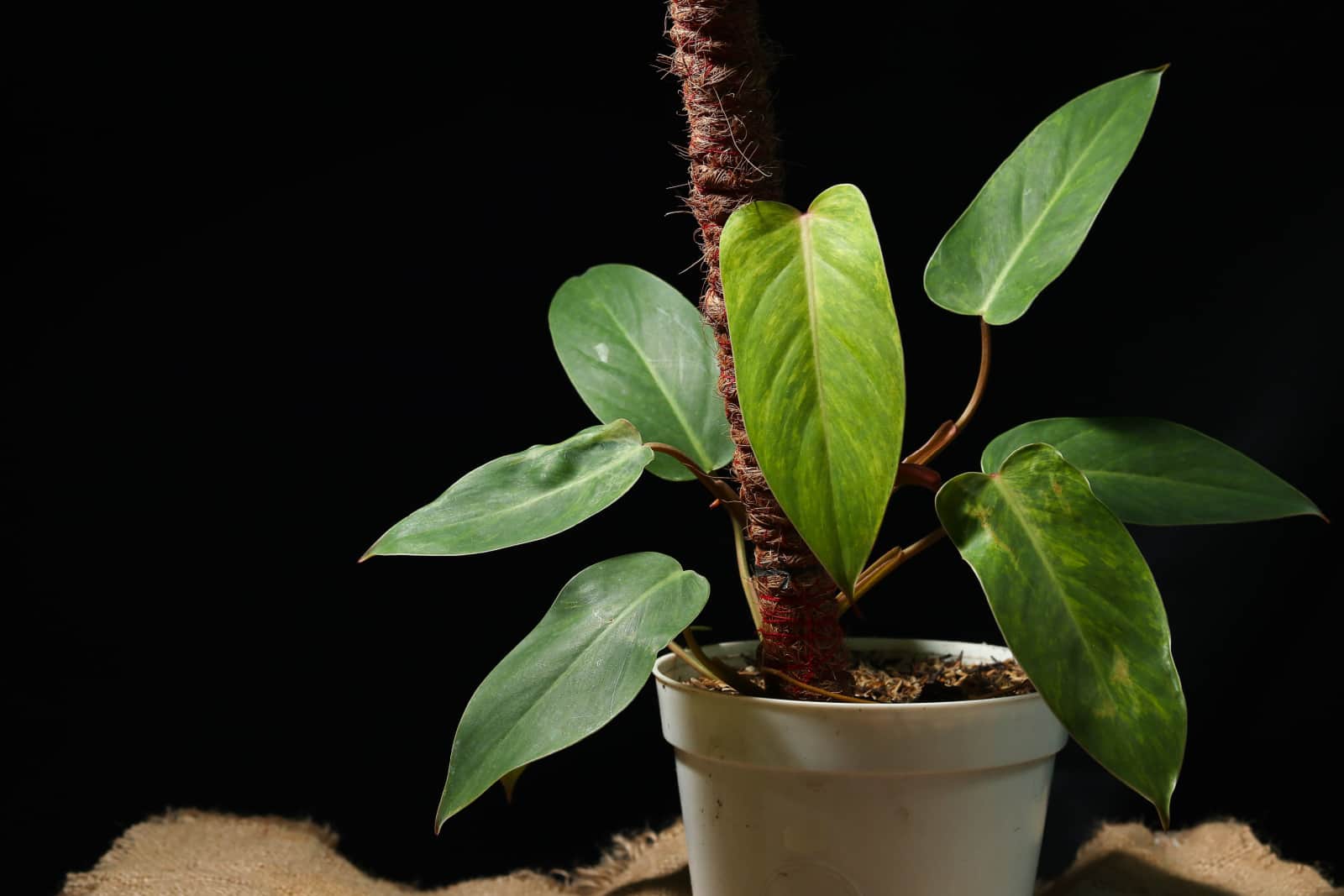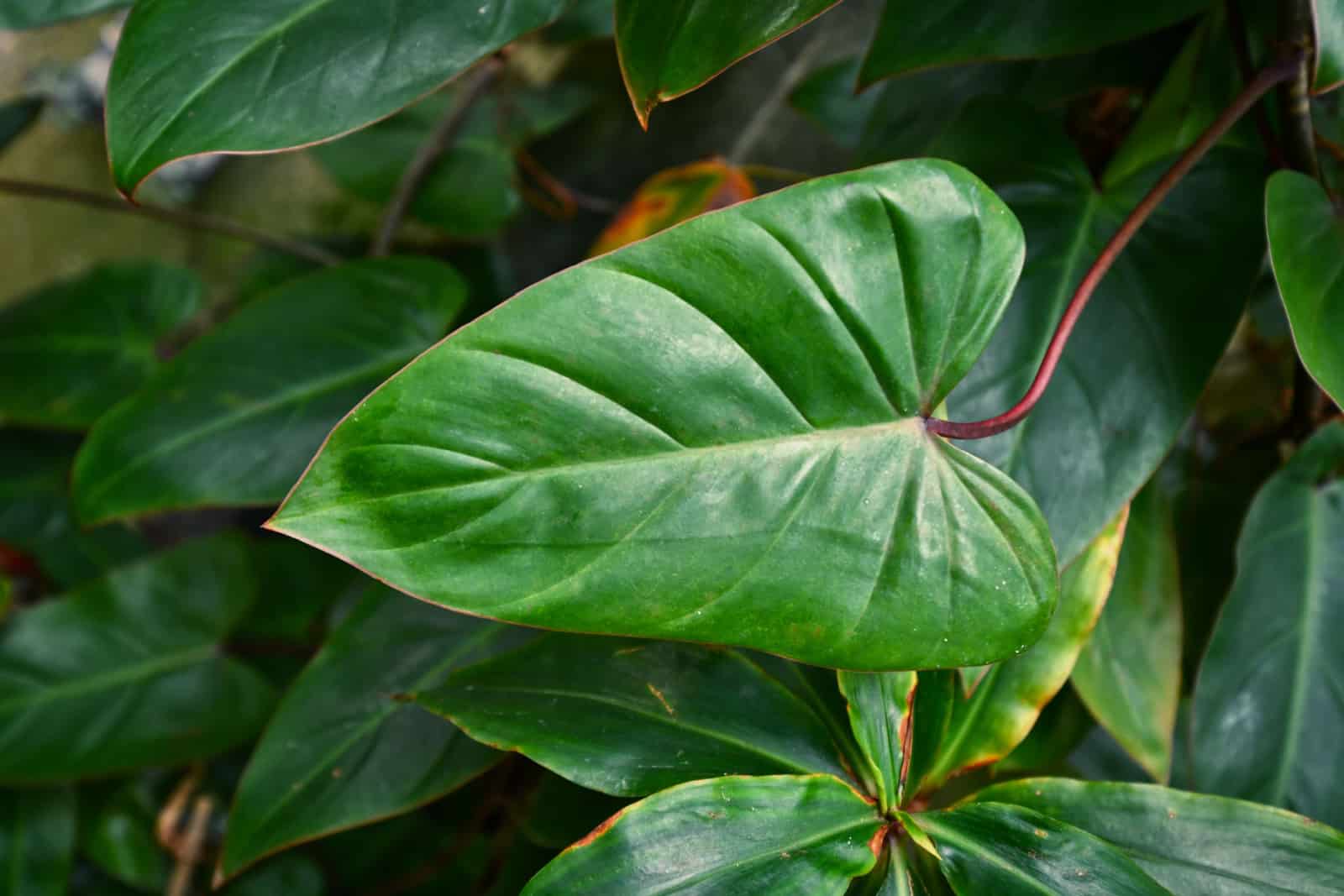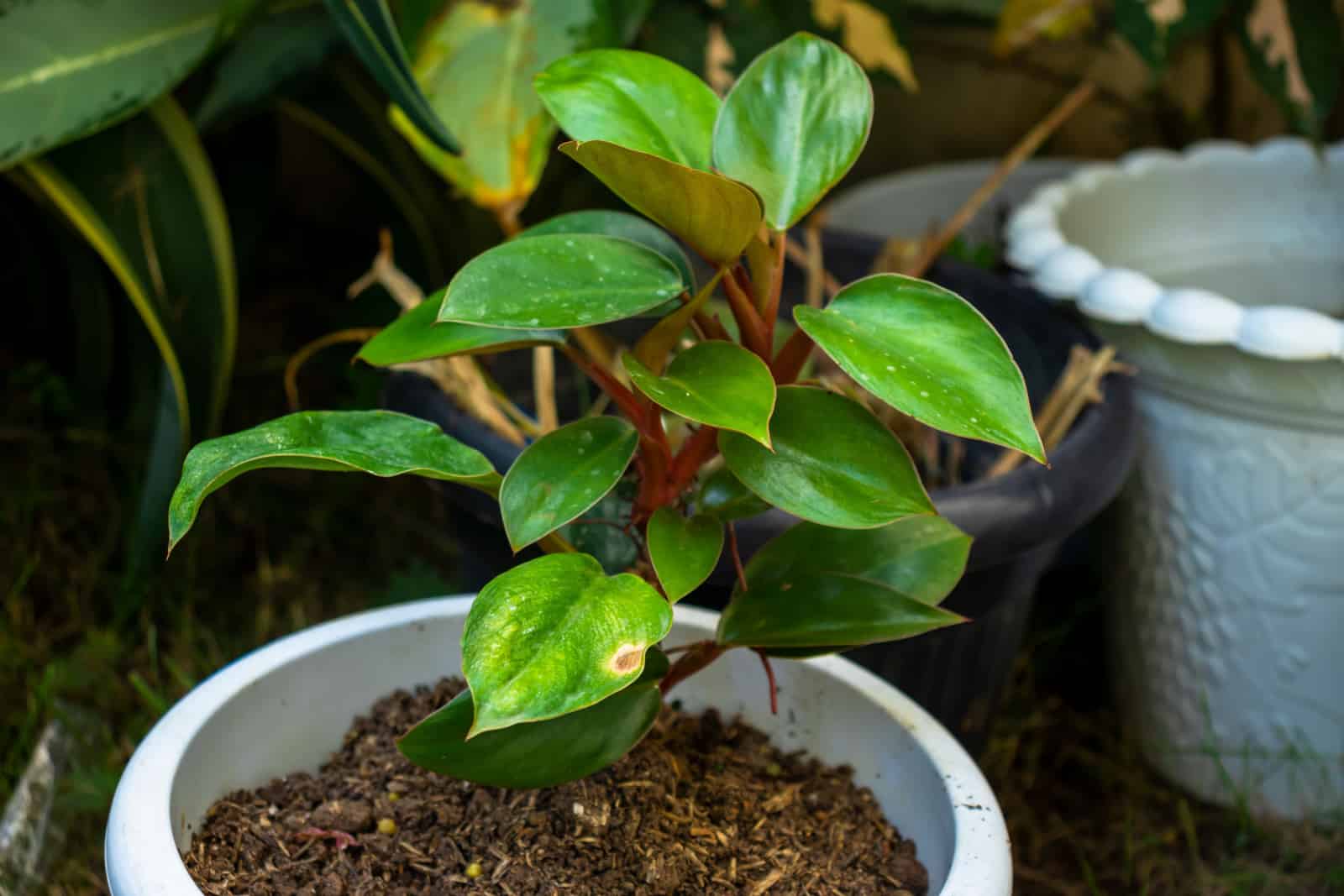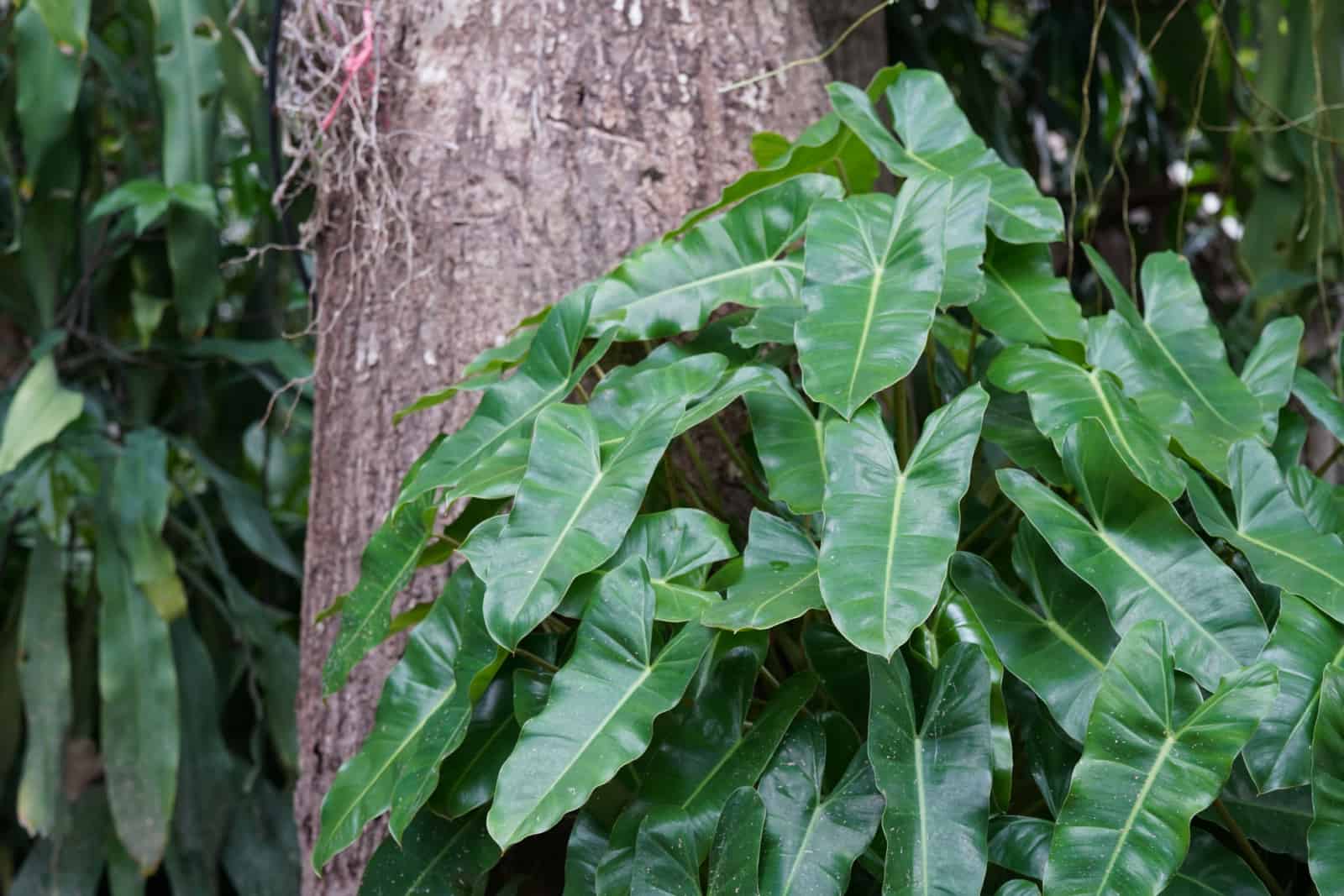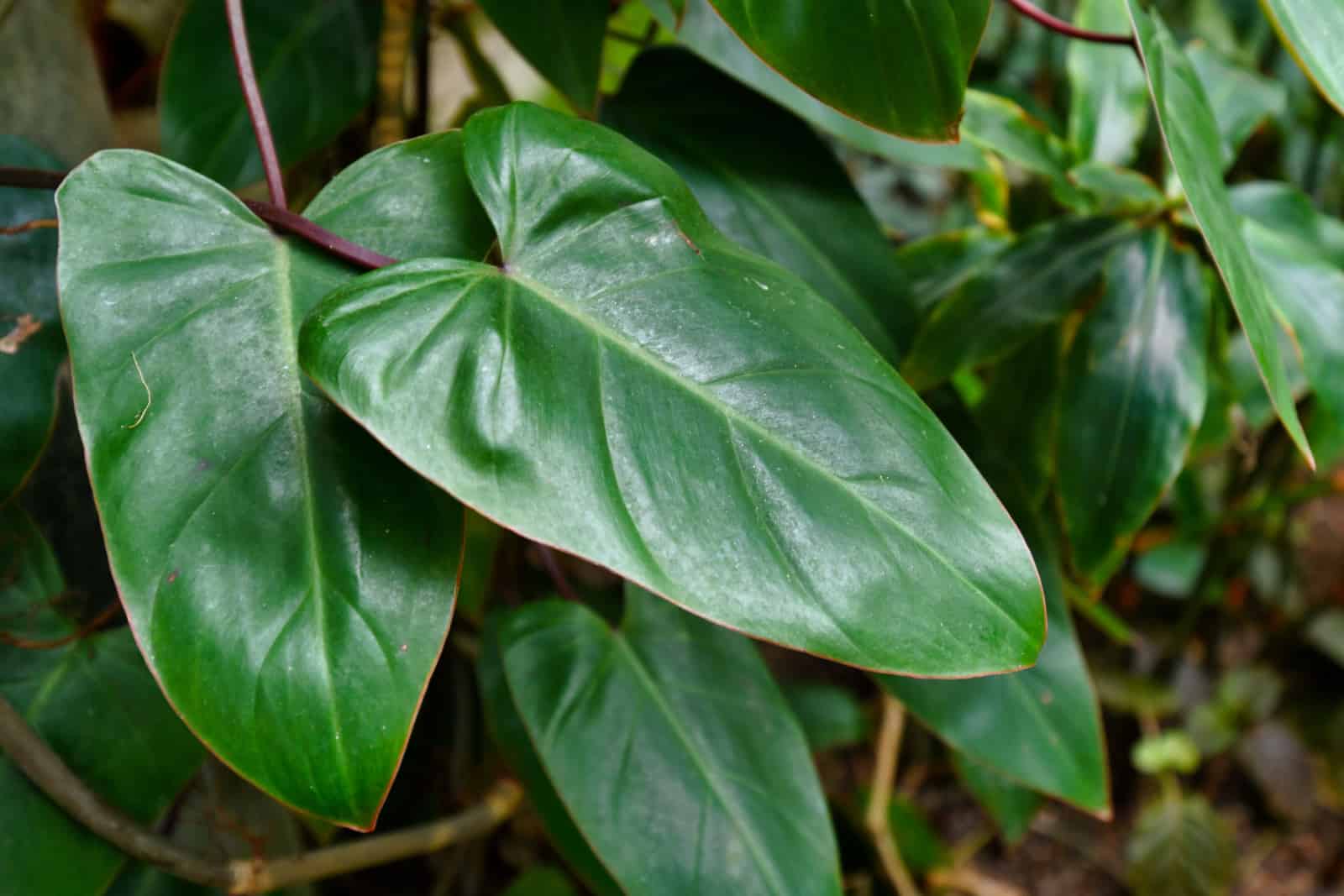You can’t go wrong choosing a philodendron as a new houseplant! There are many great reasons why growers, including beginners, decide to get these plants.
First off, they look breathtaking and are grown because of their foliage. Secondly, they don’t need much care to thrive and it’s easy to keep them happy and healthy. And third, philo plants purify the surrounding air, making them perfect for every household.
In this article I’ll tell you more about a famous philodendron species, the Blushing philodendron. This plant will make any room prettier and every plant parent happier.
Let’s start with some basic information about the Blushing philo plant:
| Family: | Araceae |
| Genus: | Philodendron |
| Scientific name: | Philodendron erubescens |
| Common name: | Blushing philodendron, imperial red philodendron, red-leaf philodendron |
| Plant type: | Evergreen, perennial |
| Native habitat: | Central and South America |
| Size: | Up to 36 inches |
| Growing season: | Spring and summer |
| USDA hardiness zones: | 10-11 |
Blushing Philodendron Care Guide
The majority of houseplants that are native to tropical areas are generally considered to be low-maintenance and will flourish if given enough water and light. However, if you’re not an experienced plant grower, you should know about the other growing conditions you’ll need to ensure.
In the following sections, I’ll describe the perfect conditions for the Blushing philodendron and show you how to repot and propagate this lovely plant.
Light Requirements
Philodendron plants, including the erubescens species, thrive in bright indirect sunlight. I have to admit that this light level was pretty confusing for me when I first started growing plants.
You should never expose your Blushing philo to direct sunlight because the leaves are sensitive and could quickly become sunburned. For instance, if you put your philodendron near a south-facing window, you’ll need to filter the sun with sheer curtains.
On the other hand, never put your Blushing philodendron in low light either. Generally speaking, philodendron species are adaptable and can grow in lower light levels. Still, they can’t survive without light, so it’s better to stay on the safe side and ensure they get bright indirect light.
Using artificial lights to compensate for a lack of light is an excellent idea.
Here’s a video on how to use grow lights for indoor plants:
How And When To Water A Blushing Philodendron
Watering is the first thing that comes to my mind when someone asks me what a plant needs to thrive. Why? Well, it may be very hard to find a balance and not underwater or overwater your plants because both can kill them.
The rule of thumb is to water your Blushing philodendron plant when the top 2 inches of the growing substrate dry out.
The main main thing is knowing when the soil is ready for watering. There are two methods that can help you determine the amount of moisture in philodendron soil. The first one is putting your finger or a wooden stick in the soil. If the soil still feels wet, don’t water your Blushing philodendron.
The second method is more reliable and, if you’re a beginner, I highly recommend it. Simply purchase a moisture meter and use it to check the soil regularly.
When irrigating, make sure all excess water drains out; the pot holes can help you with this. Pour water over the soil (avoid watering leaves) until you see water coming out of the drainage holes.
I have to mention that the Red-leaf philo and its cultivar, the Imperial green philodendron, aren’t as drought-tolerant as other species, so don’t leave their soil to dry out entirely between waterings.
Humidity And Temperature
This is one of the essential aspects of plant care. Many growers struggle to fulfill the humidity needs of their tropical plants.
When it comes to the Imperial green philodendron, it enjoys higher humidity levels and will thrive if humidity is over 60%.
Since the average humidity level indoors isn’t this high, you’ll most likely need to increase it. The easiest and safest way to increase and maintain humidity is by using a humidifier. Since this method is pretty pricey, I also have some DIY methods that could help you.
The first one is to put a pebble tray below the container of your Blushing philodendron. Fill it with pebbles or gravel and pour fresh water over them, making sure the roots aren’t touching the water.
You can also put your philo next to your other houseplants if you have any.
Another way to raise the humidity is by misting the leaves of your Imperial red philodendron. The biggest drawback of this method is that you need to mist them every day.
The last method you can try is to put your philo in the bathroom or kitchen because these rooms naturally have plenty of moisture.
Here is a video with more tips for raising humidity levels:
Temperature
The Philodendron erubescens isn’t a cold-tolerant plant and anything below 50 degrees Fahrenheit can quickly kill it.
You need to keep your Blushing philodendron in a room where the temperatures are somewhere between 50 to 80 degrees Fahrenheit.
Inadequate temperatures can cause discoloration or deformation in your Imperial red philodendron.
Make sure you don’t put your philo near heating or cooling devices, or near drafty windows because temperature fluctuations can severely damage this plant.
Soil Type
Soil for philodendron plants should meet three requirements: drainage, porosity, and fertility. These plants do not tolerate heavy soils, so you need to use free-draining ingredients such as perlite, pumice, or orchid bark.
The soil must be porous because Blushing philodendron roots need air to develop healthily. You can achieve porosity by amending the soil with ingredients such as sand. Terracotta pots are porous and can be combined with high-quality soil to avoid overwatering.
Finally, Blushing philodendron soil needs nutrients, so I recommend amending the growing substrate with compost or vermiculite.
Fertilizer
The imperial red philodendron actively grows in spring through summer and will need more nutrients during this period.
This philo isn’t picky about fertilizer type; standard houseplant fertilizer will do the job. You need to make sure you don’t over fertilize your Red-leaf philodendron, so feed it twice a month and dilute the fertilizer to half strength.
Repotting
The Imperial red philodendron is a fast-growing plant so repotting is required more frequently than with other common indoor plants.
I highly recommend repotting your Blushing philodendron every year to boost growth and ensure more nutrients. The best time of year to replant this philo is early spring, i.e., at the beginning of the growing season.
Here are the steps for repotting the blushing philodendron.
1. Prepare a new container for your Red-leaf philodendron, preferably two inches larger in diameter than the old one. Also prepare fresh growing substrate, structural support such as a moss pole, and a clean pair of scissors.
2. Gently remove your philo together with the pole from its current pot and expose the root system by removing all excess soil.
3. If some roots are damaged or discolored, cut them off with sanitized scissors.
4. Fill a new Blushing philodendron container halfway with the fresh growing substrate. Put the plant in the center along with the pole and add more substrate.
5. Irrigate the substrate well, let it drain, and you’ll enjoy new growth in the coming months.
Pruning
Generally speaking, philo plants do not require regular trimming. However, the vines of the Imperial red philodendron can grow too long and take up a lot of space. Your green buddy can also become leggy and unattractive, so it’s always best to prune it.
If you notice any discoloration on the foliage, you should remove it after determining what caused it.
Your Blushing philo will benefit from pruning at the beginning of the growing season. Simply trim the vines with a sanitized pair of pruners.
The main goal is to control the growth but since you also get the desired shape, it’s a win-win situation.
How To Propagate The Philodendron Erubescens
This is a vining plant and the easiest way to propagate it is via stem cuttings. Division is another propagation technique you can use; it has a high success rate and is pretty straightforward.
Here are the steps for propagating the Red-leaf philodendron with stem cuttings:
1. You need to prepare the medium first; you can choose between the water and soil propagation methods. If you’re propagating your Blushing philodendron in water, you’ll need a transparent vase or jar. For soil propagation, you need a nursery pot filled with fresh growing substrate.
2. Find a stem on the vine of your Red-leaf philodendron with a few aerial roots.
3. Cut the stem so you get a 4-6 inch long portion. You can take more Red-leaf philodendron cuttings at once or cut off a longer vine and divide it into a few parts. Each section should have nodes attached.
4. Put the cutting in water or plant it in a nursery pot filled with potting mix. If using water as a growing medium, refresh it every 2-3 days to avoid contamination that can occur in standing water. Maintain moisture if using soil as a growing medium.
5. When new growth appears, plant the cutting in a new container filled with adequate growing substrate.
If using the division method, take your philo out of its pot, remove the surrounding soil, separate the root ball into a few sections, and plant each section into a new pot.
Here’s a video on how to propagate Red-leaf philodendrons:
Common Problems With The Blushing Philodendron
One of the reasons I recommend the Blushing philodendron, and philo plants in general, is because it isn’t prone to problems.
However, typical houseplant pests can still attack! Diseases rarely occur and they’re primarily related to poor care, so if some discoloration or deformation occurs it’s likely because a growing condition is wrong.
Let’s get into details!
Pests
Experienced plant growers are familiar with mealybugs, aphids, and scale, so they’re well aware of how these creatures harm plants if left untreated.
If some of these pests attack your Blushing philodendron, the best way to get rid of them is by applying neem oil or an insecticidal soap solution.
Diseases
The two most common diseases that affect Red-leaf philodendron species are Leaf spot and root rot. These are both fungal diseases that you can prevent with a proper irrigation schedule.
So, if some yellow or brown spots appear on your erubescens philodendron, leaf spot disease is most likely the culprit.
You can apply fungicide on the affected plant parts, but the best thing to do is prevent them in the first place. Never water your philo over the leaves because the water won’t dry well and the leaves will become susceptible to disease.
The second disease that affects the imperial red philodendron is root rot. The main culprit for this notorious root disease is excess water in the growing substrate, which attracts pathogens.
The best solution to this disease is repotting. You can easily avoid root rot by using free-draining and porous substrates, pots with holes in the bottom, and irrigating only when the top 2 inches are dry.
Discoloration And Deformation
Incorrect growing conditions typically lead to deformation or discoloration in the Blushing philodendron.
For instance, if the foliage turns yellow, the soil is overly wet and smells bad, and the plant is wilting, root rot disease is most likely the culprit.
Dry leaf edges, wilting, and curling can occur if your Red-leaf philodendron is dehydrated. You can solve the issue by adding water more frequently until the plant shows signs of improvement.
Browning can occur due to too much exposure to direct sunlight. In this case, you need to remove the damaged parts and put your blushing philodendron in bright indirect light.
More About Blushing Philodendrons
These plants look breathtaking because of their leathery foliage that’s red when juvenile and turns green when the plant is mature.
Erubescens cultivars include the Red Emerald with its showy green leaves and reddish stems, the Burgundy with its burgundy leaf undersides, and the Pink princess with its pink blotches on lovely green foliage. It needs to be mentioned that the Pink princess is one of the rarest philodendron species.
The Blushing philodendron and all its cousins are considered air-purifying plants according to NASA. (1)
Well, you’ve seen a lot of great things about this philodendron but there’s one drawback; the Red-leaf philodendron and all plants from this genus are toxic to humans and pets (2).
Wrapping Up
The Blushing philodendron is a perfect indoor plant; it looks amazing, is easy to maintain, grows fast, and purifies the air. The only bad thing about this indoor plant is that it’s toxic.
If you were looking for a new plant, I’m sure the Imperial red philodendron is now on your list. Just follow our instructions and your lovely philo will be happy and healthy for a long time.
Until next time!
References
1. BC Wolverton; WL Douglas; K Bounds (1989). Interior landscape plants for indoor air pollution abatement. NASA.
2. Dieffenbachia and Philodendron. (n.d.). https://www.poison.org/articles/dieffenbachia-and-philodendron-202

